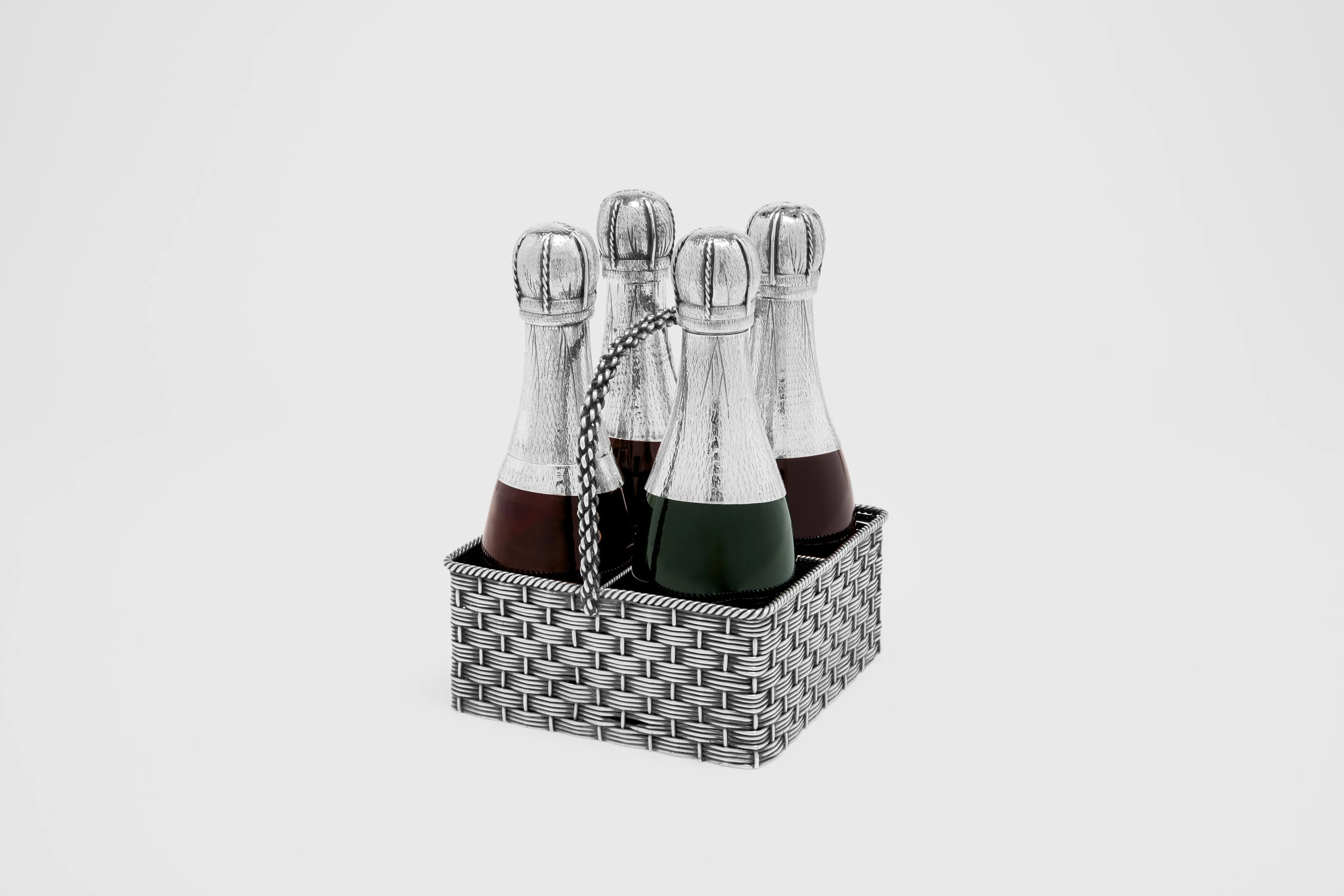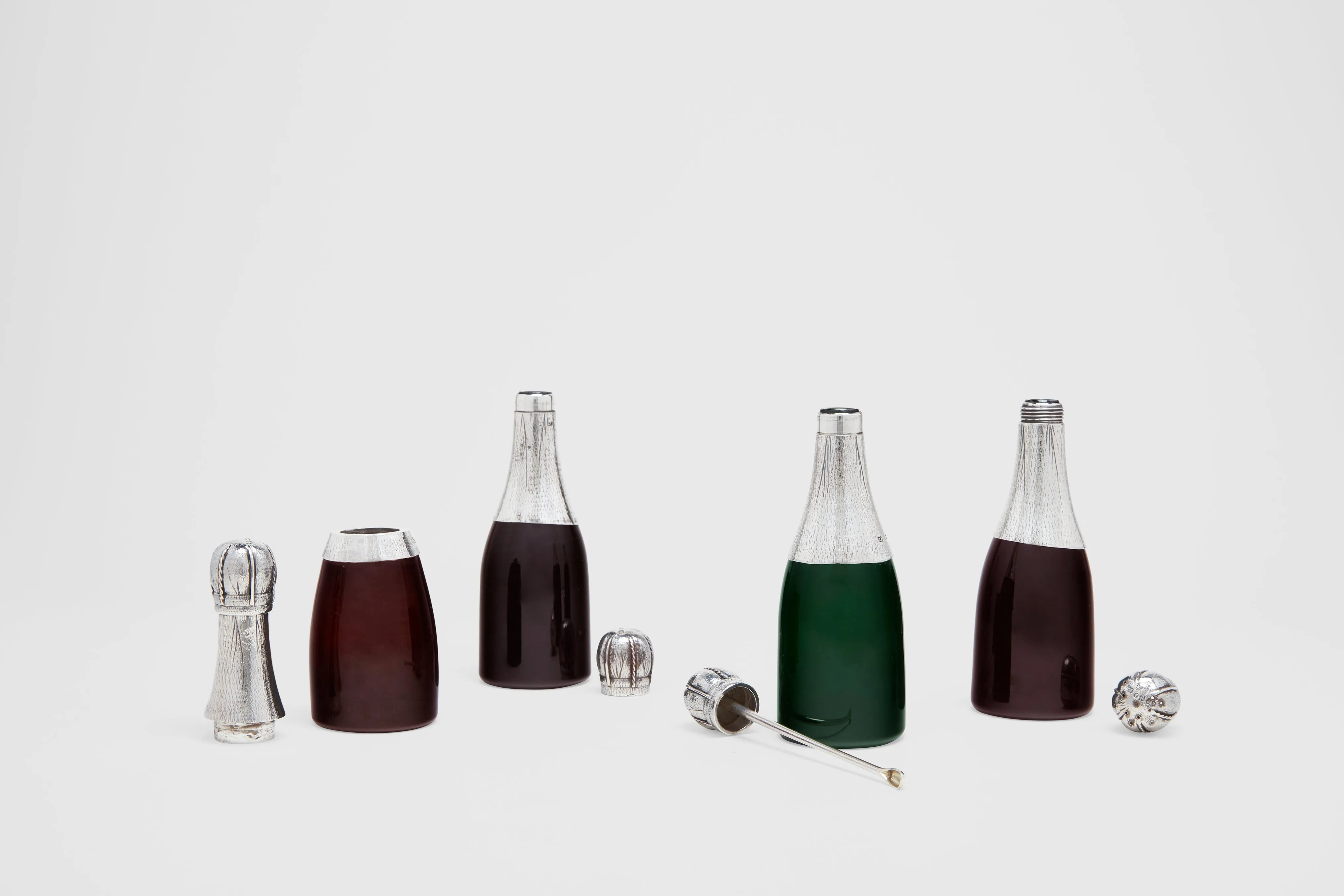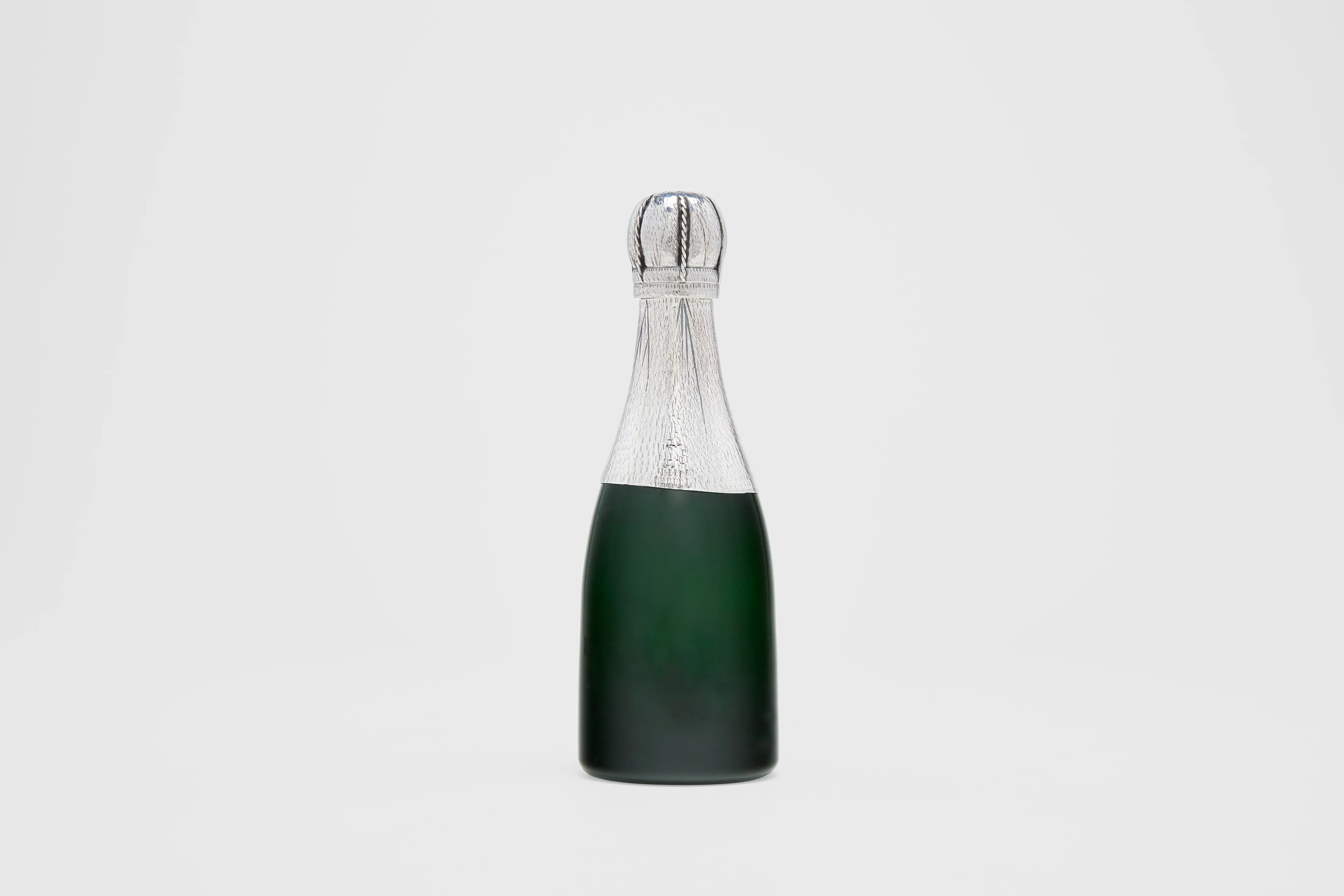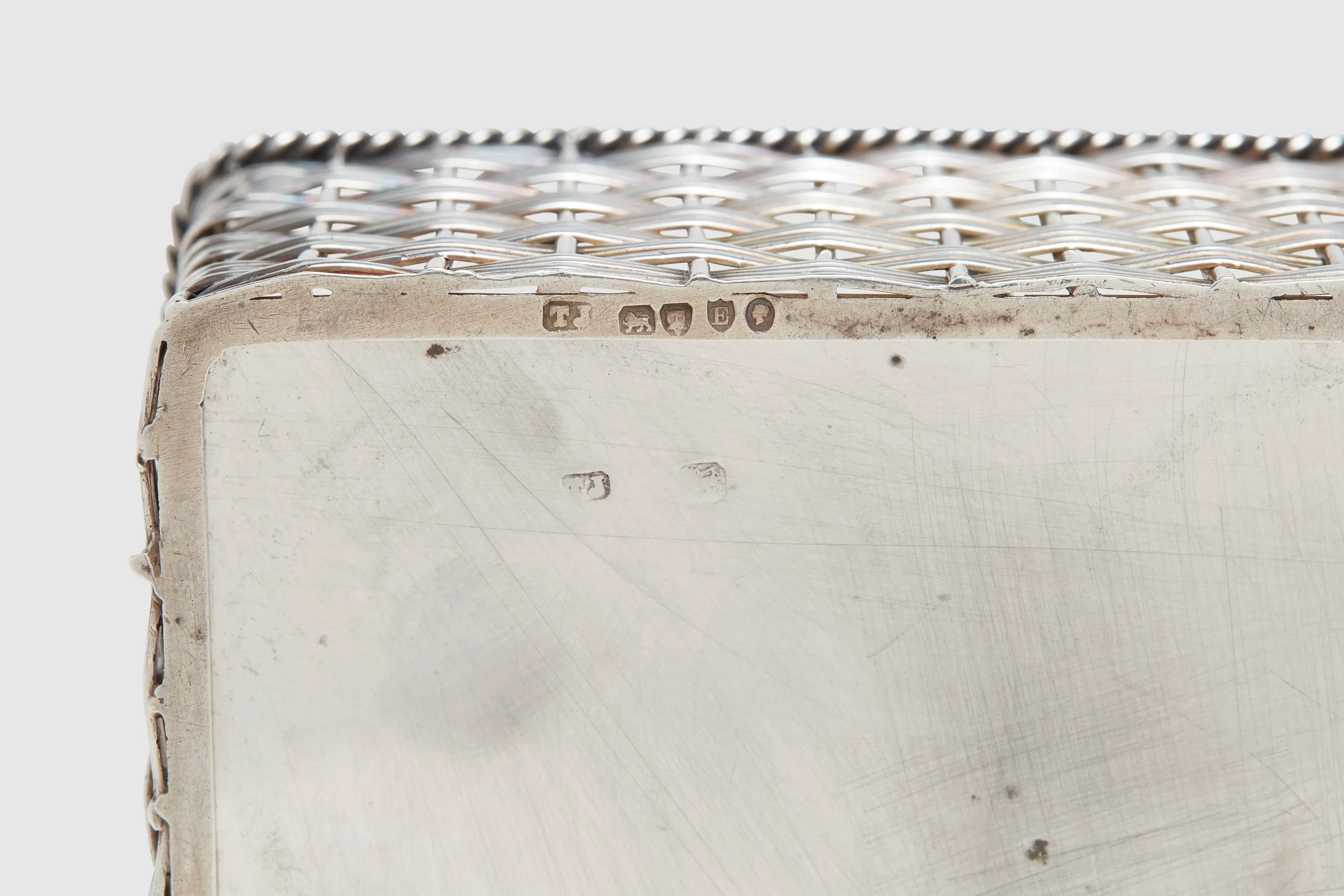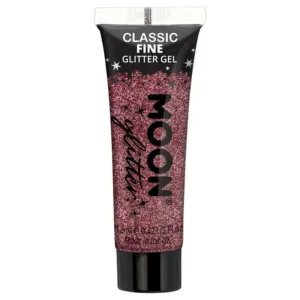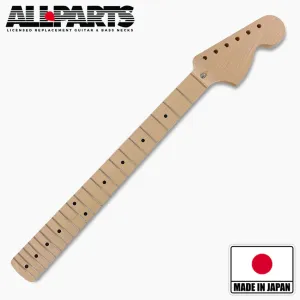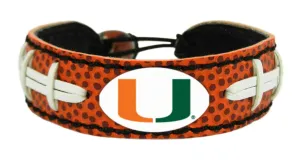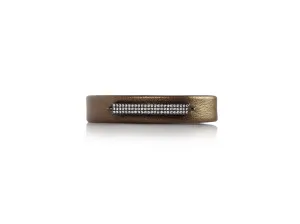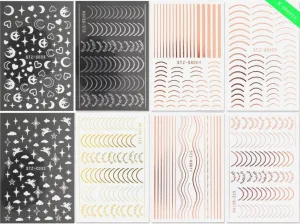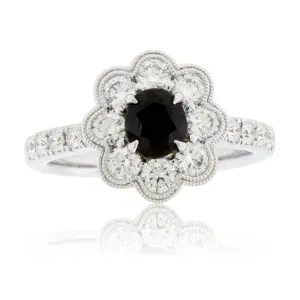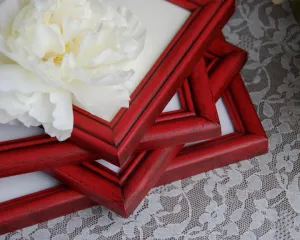A cruet set comprised of four miniature, sterling silver topped, champagne bottles in woven sterling silver basket. This is by far and away the finest cruet set that we have both handled, and in fact seen. In both quality and design the set is without rival. Each bottle is made from hand blown, deeply coloured glass. There are two dark green, a dark brown, and an almost black green. Each neck of the bottles are made in a similar fashion, to replicate the application of foil to the top of champagne bottles, this time using sterling silver.
The tops are then made to have the appearance of the wire wrapped cages that keep the corks in place during transportation. Each bottle is made for holding different condiments for the dinner table. One has a pierced top, for pepper. Another, the cork top part comes off completely containing a long fine spoon, for salt. Another has a similar method where the cork top part is removed, this time with no spoon. This would be for either a vinegar, or perhaps an olive oil. The inside of the top has a cork lining, meaning a more fluid condiment would be contained. The final bottle comes apart much nearer the base of the foiled area. This would be for sauces; Horseradish, mustard, Worcestershire sauce etc.
The 'basket' which holds the four bottles is also an exquisite piece of hand made Victorian silversmithing. There is a hand made divider that has a beautiful hand applied, fine, braided finish. This can be completely removed in order to clean any spillage onto the holder, as can be the sterling base. This braiding is then followed onto the edge of the basket in a thicker gauge. The handle is made to resemble a thicker braided wicker basket handle, however, this is made in a chain-like fashion. The exterior of the basket is a masterclass of weaving. Hard enough to complete in willow, making from a less supple sliver wire must have been quite an undertaking. Each row has four pieces of smaller wire wrapped through the side spokes. It is without flaw, and almost has the appearance of being cast, how good the finish has been achieved.
Long associated with luxury, England had a large influence on the development of champagne. Being unable to produce the drink, it was imported in ever increasing numbers during the Victorian period. As the country prospered through the beginnings of the industrial revolution, such was the demand for excess and celebration.
Wine was often transported to England in wooden wine barrels and merchant houses would then bottle the wine for sale. During the 17th century, English glassmakers used coal-fueled ovens and produced stronger, more durable glass bottles than wood-fired French glass. The English also rediscovered the use of cork stoppers, once used by the Romans but forgotten for centuries after the fall of the Western Roman Empire. During the cold winters of the Champagne region, temperatures would drop so low that the fermentation process was prematurely halted, leaving some residual sugar and dormant yeast. When the wine was shipped to and bottled in England, the fermentation process would restart when the weather warmed and the cork-stoppered wine would begin to build pressure from carbon dioxide gas. When the wine was opened, it would be bubbly.
The English were among the first who saw the tendency of Champagne to sparkle as a desirable trait, and tried to understand why it did bubble. In 1662, the English scientist Christopher Merret presented a paper detailing how the presence of sugar in a wine led to it eventually sparkling, and that nearly any wine could be made to sparkle by adding sugar to a wine before bottling it. This is one of the first known accounts of understanding the process of sparkling wine and suggests that British merchants were producing "sparkling Champagne" even before the French Champenois were deliberately making it.
This is perhaps why this important piece for a high end dining table would have been designed in this fashion. Once can find other bar and food related decanters and tools that take on the form of champagne bottles. A cruet set that would adorn the table alongside this luxury tipple makes sense.
This exquisite piece was made in London, England in 1880. It is hallmarked in many places and on every single piece. In English law, any piece made of metal that is removable must also be tested for purity, and is subsequently hallmarked to ensure its sterling silver composition. The piece was made by silversmith Thomas Johnson II. A generational silversmith operating out of initially Holborn, and then Clerkenwell workshops. The condition throughout is perfect with no condition issues whatsoever.

